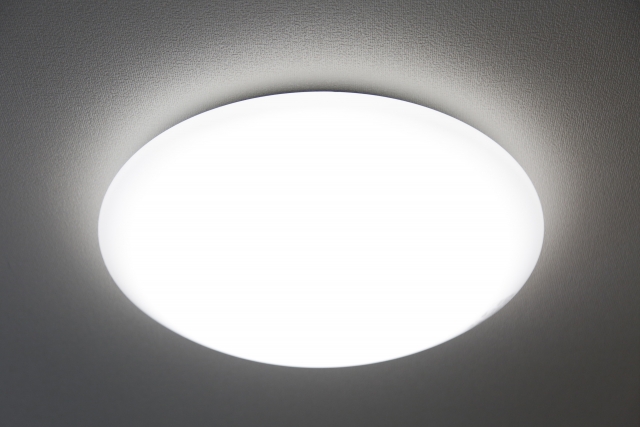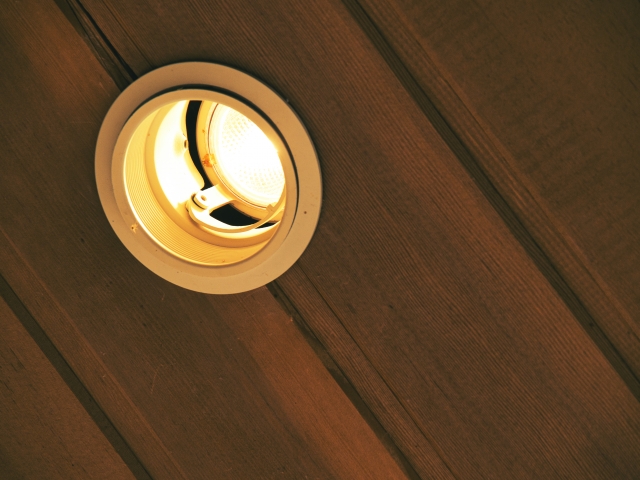Improve the lighting environment in the bedroom

The research paper “良質な睡眠のための環境づくり -就寝前のリラクゼーションと光の活用-” is cited and referenced.
Among environmental factors in the bedroom, lighting is known to affect sleep. Lighting characteristics include illuminance, color temperature, luminance, light source height and light spread, etc. Among these, illuminance and color temperature have a significant impact on physiological aspects of the organism, such as biological rhythm and arousal level, as well as psychological aspects, such as a sense of calmness. Illuminance is an index of brightness and is expressed in lux. It is 0.5 lux at moonlight, 150-300 lux in a living room of an ordinary house, 500-1000 lux in an office, and 5000-10,000 lux on a sunny day. Color temperature is a numerical expression of the hue of light (whether it is red, blue, or yellow) and is expressed in Kelvin (K). A high color temperature indicates a bluish-white light. Daylight-white and daylight fluorescent lamps are examples, with color temperatures ranging from 5,000 to 6,700 K. Lower color temperatures indicate reddish light. A low color temperature represents reddish light, such as incandescent lamps and light bulb fluorescent lamps, with a color temperature of about 3000K.
Light above 6500 K, which has a high color temperature, affects the human body. In the wavelength range, it is considered to be in the 450-550nm range, with the peak of influence being around 460-470nm in particular. Blue light, which has a wavelength of about 440-500 nm, has high energy and high impact.
Influence of light
The research paper “快眠に役立つ光環境整備手法 -照明環境の立場から-” is cited and referenced.
Light affects our circadian rhythm, or biological clock. If we receive more light in the first half of the night, the time before sleep, our biological clock is set backward; if we receive more light in the early morning or in the second half of the night, our biological clock is set forward. In other words, if you see a lot of light before going to sleep, you will not be able to sleep, and if you see a lot of light in the morning, you will feel drowsy earlier in the day. On the other hand, if you receive a lot of light during the daytime, the time of your biological clock does not change, but the oscillatory function of the clock is strengthened and the amplitude of the circadian rhythm is increased. Conversely, high light exposure at night suppresses melatonin secretion and prevents the body temperature from falling, thereby weakening the body clock rhythm. Suppression of melatonin secretion is particularly strong with blue light and has been observed in people with closed eyes and visual impairment. In addition, if the body temperature cannot be lowered properly, it is not possible to fall asleep smoothly. This is because people feel drowsy when their body temperature drops and the temperature difference from their skin temperature becomes smaller. Blue light is known to suppress the lowering of body temperature as well, and there is a risk of lowering the quality of sleep. Conversely, blue light may be efficient for arousal.
In the days when both incandescent lamps and electricity were precious, the duration of lighting was short and the blue wavelength component was low, so the effect on circadian rhythms was small. Today, however, both the amount of light emitted at night and the blue wavelength component are increasing. In particular, it is important to be careful about using white LEDs, which have a prominent blue wavelength component, for indoor lighting at night. On the other hand, even though lighting has made indoor spaces brighter, the amount of light emitted is only about 1/100th that of outdoor spaces during the daytime. When society is affected by the shift to 24-hour-a-day lighting, the amount of light received outdoors during the day is drastically reduced, and at night there is excessive light reception. This may lead to a weakening of circadian rhythms and abnormalities in sleep-wake rhythms.
How should lighting be changed at different times of the day?
Lighting environment before bedtime

Before bedtime, the lighting should be less than 30 lux in illuminance and less than 3000K in color temperature. Specifically, the brightness should be about lighter and the color red to orange.
The amount of melatonin, which is secreted as a clock substance, exhibits a circadian rhythm and is higher before sleep. Melatonin is light-dependent; the higher the illumination and the more light received, the more melatonin secretion is suppressed, leading to an increase in arousal. In addition to its effect on melatonin secretion, the appropriate illuminance is between 100 and 200 lux, taking into consideration that it does not interfere with general visual tasks. Light with a low reddish color temperature has a calming effect. And in a study that examined the optimal illuminance and color temperature settings for lighting based on their effects on the decline in arousal level before falling asleep, the condition of 30 lux illuminance and 3000 K color temperature resulted in the smoothest decline in arousal level. Just before bedtime, illuminance should be even lower and color temperature should be lower than 3000 K.![]()
Lighting environment while sleeping
It has been observed that light enters through the eyelids during sleep and that the body responds to that light. In a study examining the effect of ambient illumination during sleep on sleep depth, the average all-night sleep depth was highest at 0.3 lux, sleep became shallower at 30 lux and above, and at 50 lux and above, there was a light-shielding behavior that covered the face. And, to our surprise, it is shallower at 0 lux, which is darkness, than at 0.3 lux. Therefore, 0.3 lux to 1 lux is recommended during sleep. It is OK if the lights are turned off and no light from outside comes in.
Lighting environment before and after waking up
It is important to lighten the light gradually over a period of at least 30 minutes.
It has been reported that a gradual increase in illuminance to 100 lux for 30 minutes before waking promotes spontaneous awakening and improves the sense of wakefulness. When the illuminance was gradually increased to 1000 lux for 30 minutes before waking up, it was found to decrease sleepiness upon waking, improve the feeling of sound sleep, and increase attention and concentration. The author of this paper speculates that these results suggest that gradually increasing the illuminance before waking may have increased sympathetic nerve activity and promoted wakefulness preparation for waking, thereby improving the sense of wakefulness.
For color temperature, 5000 K or higher is desirable to promote melatonin suppression and increased alertness.
There are lighting fixtures like this
Red light and low illumination are available before sleep. There is also a luminaire that helps wake you up in the morning with a sunrise function that slowly intensifies the light. It also has a sound alarm function.
Totonoelite creates a sleep environment for everyone from babies to adults.



コメント